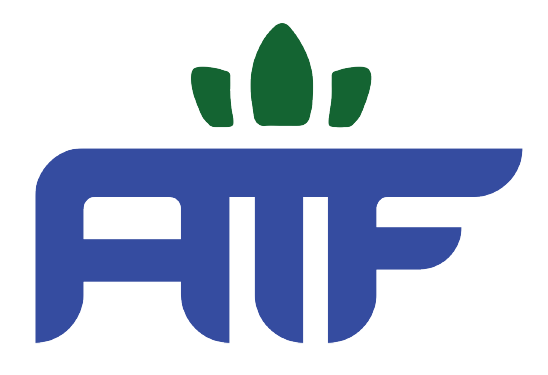Assets are items of economic value that can be converted into cash or cash equivalents. So, if you want to know the amount a customer is expected to pay on a particular date, you’ll need to refer to your Customer’s Account in your general ledger. Similarly, you need to refer to the Creditor’s Account in your general ledger if you want to know the amount you are liable to pay to him on a specific date. Accountdemy offers accounting tools and resources for students and professionals. Equip yourself with the right tools and resources from our shop, or explore our free accounting lessons.
First, the transactions are recorded in the original book of entry, known as the journal. Once the journal is complete, these transactions are then posted to individual accounts contained in general ledger. Valuation account (also known as contra account) is an account which is used to report the carrying value of an asset or liability in the balance sheet. A popular example of valuation account is the accumulated depreciation account. Companies maintaining fixed assets in the books of accounts at their original cost also maintain an accumulated depreciation account for each tax information for nonprofits fixed asset.
AccountingTools
As a result, you do not record details of each sales transaction undertaken with your customers in the accounts receivable control account. But, you can refer to the related subsidiary account if you need to check any detail regarding the sales made to a specific customer. A general ledger contains information related to different accounts, providing information that helps you in preparing your business’ financial statements, including income statements and balance sheets. According to modern approach, the accounts are classified as asset accounts, liability accounts, capital or owner’s equity accounts, withdrawal accounts, revenue/income accounts and expense accounts. The Chart of Accounts is a list of all general ledger accounts that are being used by the business for recording financial transactions.
To record these increases and decreases, accountants use a device called Ledger Account. Arthur Field House says; “Ledger is the permanent storehouse of all the transactions”. The term used to match your bank’s account entries is famous as “bank reconciliation.” Typically, reconciliations are completed at the end of each month. On October 1, Nick Frank opened a bank account in the name of NeatNiks using $20,000 of his own money from his personal account. Operating Income is generated from your core business operations and helps you to know your capacity to generate profits from primary business activities.
This is done by comparing balances that appear on the ledger accounts to those on the original documents, such as bank statements, invoices, credit card statements, purchase receipts, etc. In a general ledger, you can easily find information like a sales transaction, purchase transaction, etc. Needless to say, General Ledger is one of the primary books of entry and it forms the basis of your financial statements and helps you in evaluating the financial affairs of your firm. Stockholder’s equity is the capital that your shareholders invest in your business in return for the company’s stock and retained earnings. The shareholder’s equity appears on the liability side of your company’s ifrs vs gaap balance sheet after current and non-current liabilities.
What is the GL Code?
It systematically classifies every transaction into accounts that are stored in a large database of financial transactions called the General Ledger. For instance, one of the most common accounts is the company checking account. Transactions such as paying bills decrease this account and making deposits increases the account. Assume an ending balance of $1,000 from last month in your company checking account.
General Ledger Account Numbers
It records all the transactions that take place between you and your debtors. In this instance, debtors refer to the business entities to whom you have sold goods that you manufacture. In other words, you record the relevant transactions under the individual general ledger accounts, which are recorded based on the Duality Principle of Accounting. Therefore, a general ledger contains individual accounts in which similar transactions are recorded, whether relating to an asset, a liability, an individual, or an expense. Capital is the owner’s claim against the assets of the business and is equal to total assets less all liabilities to external parties.
What is a Ledger Account?
To determine the account balance, add the beginning balance and deposits to get the total debits and from that sum, deduct the withdrawals which are the total credit. The company’s Cash In Bank account reflected a debit balance of $1,300 because the total debit is higher than the total credit. The T-account, which is an informal version of the ledger account, serves as a visual aid to provide a view of all transactions that have been recorded in a single ledger account over a given time period. Like the ledger account, it tax changes shake up salt deductions contains the beginning and ending balances in addition to the increases and decreases in its amount during the period. The accounting information system records and tracks the financial transactions of a business.
What is Accounts Receivable Collection Period? (Definition, Formula, and Example)
Unlike journal where transactions are recorded in chronological order as they occur, you record transactions in the ledger by classifying them under various account heads to which they relate. As a result, you’ll get an understanding of your company’s position with regards to debtors, creditors, expenses, revenue, income, etc. For example, any outstanding payments against suppliers or any payments to be collected from customers. A purchases ledger, or creditors ledger, records all transactions relating to purchases that a business entity makes.
Presentation of Ledger Accounts
- The general ledger then becomes the fundamental record source to create the financial statements of a business.
- The codes also provide a useful way to track and categorize financial data for budgeting, forecasting, and decision-making purposes.
- Current liabilities include accounts payable (amounts owed to vendors that have granted credit terms) and other payables like income tax, payroll taxes, and sales tax, as well as accruals such as wages payable.
- Balance Sheet ledger accounts are maintained in respect of each asset, liability and equity component of the statement of financial position.
It also showcases the amount you pay to your suppliers or the amount yet to be paid for any purchases. As a result, each transaction of your business takes place in such a way that this equality between the two sides of the accounting equation is always maintained. That is, at any point in time, the resources or the assets of your business must equate to the claims of owners and outsiders.
One of the factors you should consider when establishing the company’s chart of accounts is the type of accounts to be used depending on the nature of your business operations. Every company’s chart of accounts are different from one another because it is not likely that two businesses who have the same exact operations. For example, let’s assume that a company’s Accounts Receivable shows a balance of $1,000 and it estimates that 10% or $100 of the said balance will not be collected. The estimated $100 will be recorded in a contra account called Allowance for Bad Debts. The Accounts Receivable is the companion account of the Allowance for Bad Debts and from which the latter will be deducted. As a result, the net amount of the Accounts Receivable will be $900 after the deduction.
After recognizing a business event as a business transaction, we analyze it to determine its increase or decrease effects on the assets, liabilities, equity, dividends, revenues, or expenses of the business. Then we translate these increase or decrease effects into debits and credits. Similar ledger accounts can be made for other balance sheet components such as payables, inventory, equity capital, non current assets and so on.
- However, having many ledger accounts can easily lead to confusion and a disorganized accounting information system.
- For example, one accountant might name an account Notes Payable and another might call it Loans Payable.
- Examples of expenses include salaries expense, rent expense, wages expense, supplies expense, electricity expense, telephone expense, depreciation expense and miscellaneous expense.
- The company’s Cash In Bank account reflected a debit balance of $1,300 because the total debit is higher than the total credit.
- The name of the account ‘Electricity Expense’ and its account code 640 are also shown in the heading.
Then, each account presents trial balances used to summarize each account balance. Another way of categorizing ledger accounts is to record them as a balance sheet or income statement accounts. An organisation documents the transactions throughout the year by debiting and crediting the accounts. Normal business processes trigger these transactions by charging customers or adjusting entries.
As mentioned earlier, the general ledger is a database containing the financial transactions of a company. Within the general ledger are ledger accounts which we can simply refer to as accounts. Balancing the general ledger is a critical part of the accounting process, as it ensures the accuracy of financial statements and allows companies to make informed decisions based on their financial data.
Written cheques and deposits made after the date will not appear on the statement. The ledger’s balance is useful to determine whether the obligations to maintain a particular minimum balance are being fulfilled. The amount of the ledger differs from the balance of available bank accounts. As the business grows and the number of accounting staff increases it is impractical to have only one ledger.


Recent Comments